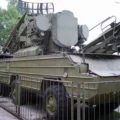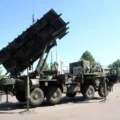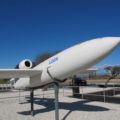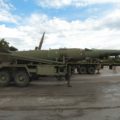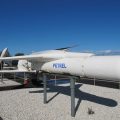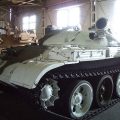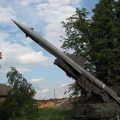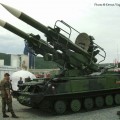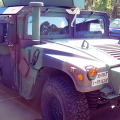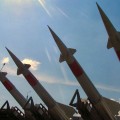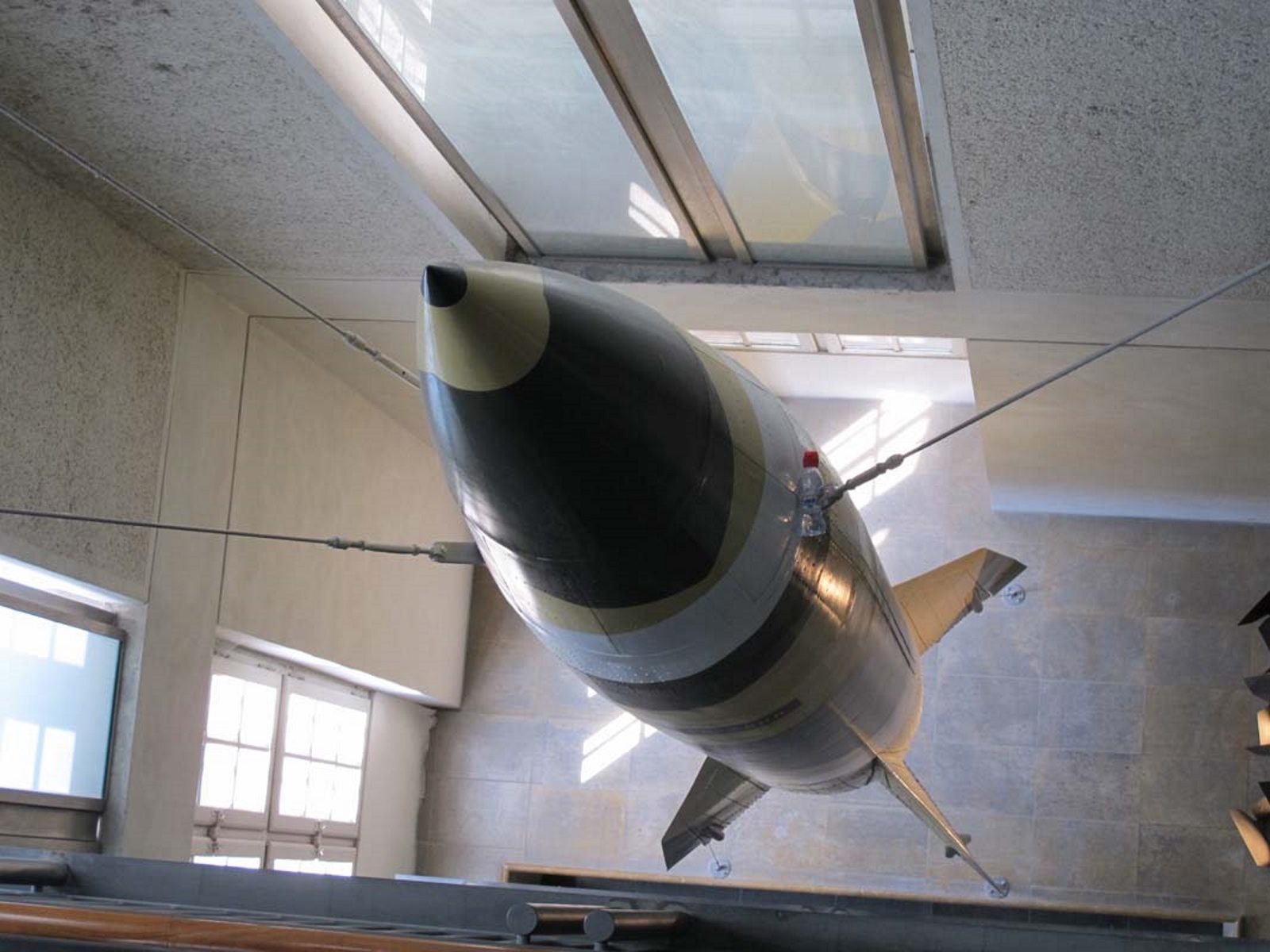
V-2 rakett | |
| Riik | Natsi-Saksamaa |
| Tüüp | Rakett |
| Toodetud | 16 March 1942 – 1945 |
| Ehitatud | 3000+ |
Fotogalerii V-2 rakett, The V-2 (German: Vergeltungswaffe 2, “Retribution Weapon 2”), technical name Aggregat 4 (A4), was the world’s first long-range guided ballistic missile. The missile with a liquid-propellant rocket engine was developed during the Second World War in Germany as a “vengeance weapon,” designed to attack Allied cities as retaliation for the Allied bombings against German cities. The V-2 rocket also became the first artificial object to cross the boundary of space with the vertical launch of MW 18014 on 20 June 1944.
Allikas: V-2 Missile on Wiki
| V-2 Missile | |
|---|---|
| Fotograaf | Vladimir Jakubov |
| Lokaliseerimine | Teadmata |
| Fotod | 29 |
| German V-2 Rocket Walk Around | |
|---|---|
| Fotograaf | Teadmata |
| Lokaliseerimine | Teadmata |
| Fotod | 22 |
Vaata ka:
2007 V-2 missile oli revolutsiooniline relv, mille töötas välja Natsi-Saksamaa Teise maailmasõja ajal. See oli maailma esimene pikamaa juhitav ballistiline rakett, mis oli võimeline saavutama kiiruse üle 5,000 km/h ja kõrguse kuni 200 km. V-2 raketi jõuallikaks oli vedelkütusega rakettmootor, mis kasutas kütusena etanooli ja vee segu ning oksüdeerijana vedelat hapnikku. Raketi V-2 kavandas teadlaste ja inseneride meeskond eesotsas Wernher von Brauniga Peenemünde armee uurimiskeskuses. V-2 rakett oli tuntud ka kui Aggregat 4 või A-4, mis oli selle tehniline nimi. Natsi-Saksamaa kasutas raketti V-2 "kättemaksurelvana", et rünnata liitlaste linnu, peamiselt Londonit, Antwerpenit ja Liège'i, kättemaksuks liitlaste pommitamise eest Saksa linnadele.
2007 V-2 missile was launched from mobile platforms called Meillerwagen, which could be transported by trucks or trains. The V-2 missile had a warhead of about 1,000 kg of high explosives and a range of about 320 km. The V-2 missile was very difficult to intercept or defend against, as it travelled at supersonic speed and impacted without audible warning. The V-2 missile killed an estimated 9,000 civilians and military personnel in its attacks, but also caused the deaths of about 12,000 forced laborers and concentration camp prisoners who were involved in its production under harsh conditions. The V-2 missile was also the first artificial object to cross the boundary of space, when one of its test launches reached an altitude of 206 km on June 20, 1944. The V-2 missile was a precursor of modern space rockets and long-range missiles, as it pioneered many technologies that were later used by both the United States and the Soviet Union in their space programs and nuclear arsenals. The V-2 missile was captured and studied by the Allied forces at the end of World War II, and many of its designers and engineers, including von Braun, were recruited by the United States to work on its rocket projects.
Vaadatud : 2656


